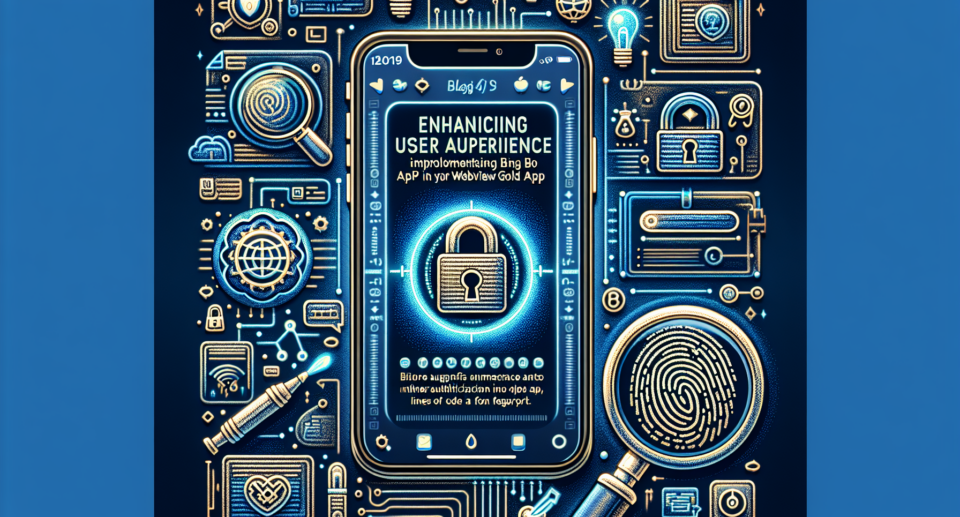Enhancing iOS User Experience: Implementing Bio Authentication API in Your WebViewGold App

In today’s digital landscape, user security and experience go hand-in-hand. Ensuring that your app is both secure and easy to use can dramatically improve user engagement and trust. One of the most effective ways to achieve this on iOS devices is through the implementation of Bio Authentication APIs, such as Touch ID and Face ID. In this article, we’ll guide you on how to seamlessly integrate these authentication methods into your WebViewGold app.
What is WebViewGold?
WebViewGold is a powerful tool that offers a quick and simple solution to convert websites into fully functional apps for iOS and Android. With no coding required, this platform allows anyone to transform their online presence into an application with ease. However, the real magic happens when you enhance your app with additional features like Bio Authentication, elevating the user experience to new heights.
The Importance of Bio Authentication
Bio authentication boosts the security of your app by adding an extra layer of protection. It ensures that only the authorized user can access sensitive information within the app. This increases user trust as they feel assured that their data is safe, leading to higher engagement and retention rates.
Implementing Bio Authentication in WebViewGold
With WebViewGold, integrating Bio Authentication APIs is straightforward. Here’s a step-by-step guide to help you get started:
Step 1: Prepare Your Project
Firstly, ensure you have the latest version of WebViewGold for iOS. Once you have your project set up, you’ll need to make some modifications to enable bio authentication.
Step 2: Add Required Frameworks
Navigate to your project settings in Xcode, and under the ‘General’ tab, locate the ‘Frameworks, Libraries, and Embedded Content’ section. Here, add the LocalAuthentication.framework. This framework provides the necessary classes and methods to manage bio authentication.
Step 3: Modify Your Code
Next, open your ViewController.swift file and import the LocalAuthentication framework at the top of the file:
“`swift
import LocalAuthentication
“`
Then, add the following code to prompt the user for bio authentication:
“`swift
let context = LAContext()
var error: NSError?
if context.canEvaluatePolicy(.deviceOwnerAuthenticationWithBiometrics, error: &error) {
let reason = Authenticate with Touch ID / Face ID
context.evaluatePolicy(.deviceOwnerAuthenticationWithBiometrics, localizedReason: reason) {
[weak self] success, authenticationError in
DispatchQueue.main.async {
if success {
// Successfully authenticated
self?.proceedToSecureContent()
} else {
// Failed to authenticate
self?.showAuthenticationFailedAlert()
}
}
}
} else {
// Biometrics not available
self.showBiometricUnavailableAlert()
}
“`
This code sets up the context for biometric evaluation and handles the logic for successful and failed authentication attempts.
Step 4: Handle Authentication Outcomes
Implement methods to handle the outcomes of the authentication process:
“`swift
func proceedToSecureContent() {
// Code to navigate to secure content
}
func showAuthenticationFailedAlert() {
// Alert user about the failure
}
func showBiometricUnavailableAlert() {
// Alert user that biometrics are not available
}
“`
Step 5: Test Your Implementation
Finally, thoroughly test your app on a device that supports biometrics to ensure everything works as expected. Make any necessary adjustments based on your test results.
Conclusion
